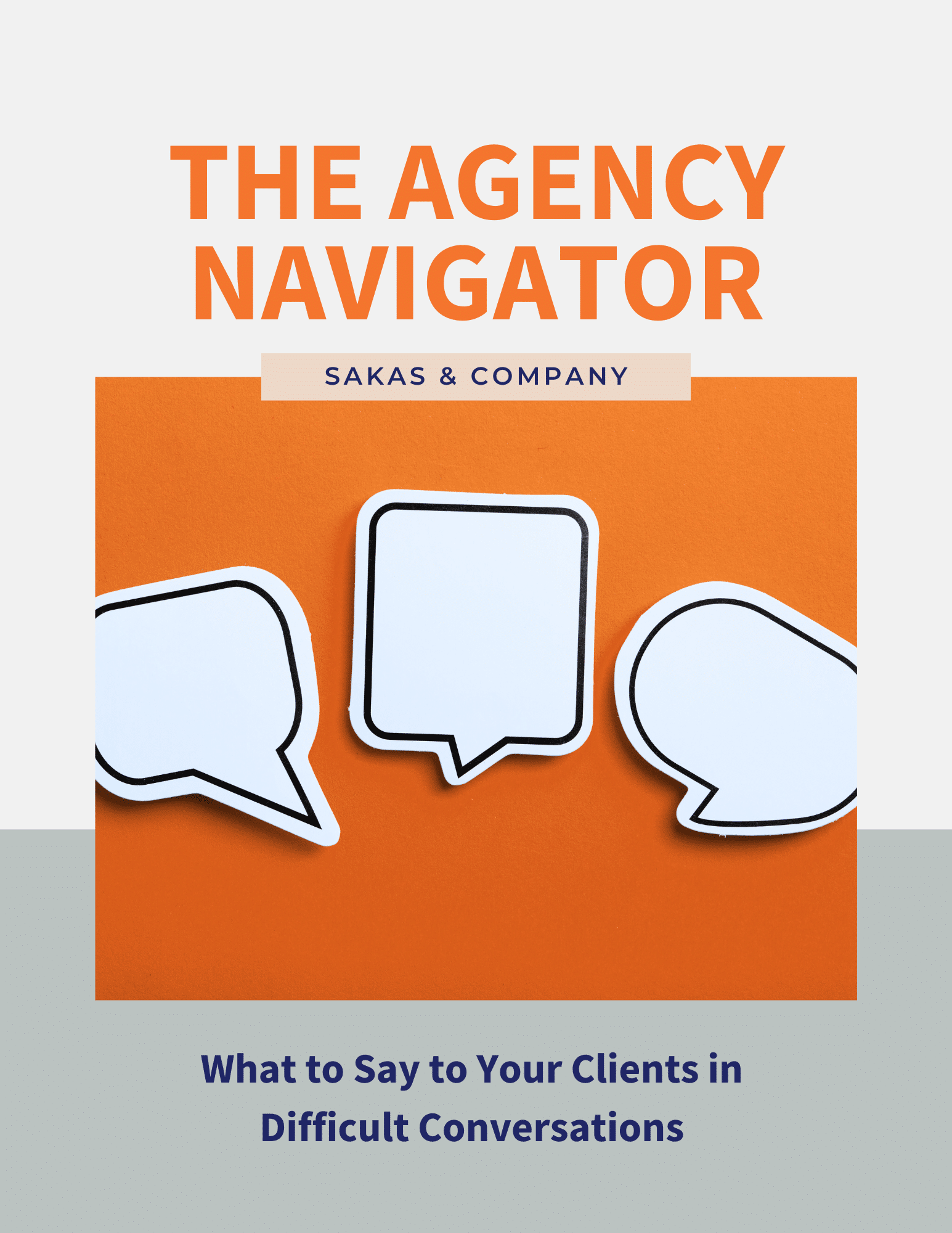There are “best practices” in business, but there are also “next practices”—the things you can do to get an “unfair advantage” over other agencies that aren’t following those practices yet.
This translates to making your agency produce better results—which leads to a higher valuation (for selling an equity-oriented agency) and to making more money now (if you want to enjoy a lifestyle agency).
I help clients develop and hone “next practices.” Here are the top 7 “next practices” I’m seeing as an agency consultant:
- Gather stakeholder intel using pre-kickoff surveys.
- Build internal tools to boost efficiency.
- Maintain priority-rankings for each employee.
- Build a “Dream 100 client” list.
- Offer (and cross-sell) services in all 3 areas of my “Think, Teach, Do” agency services model.
- Quantify agency impact for clients, to include building models to show clients what the agency did for them.
- Commit to thought leadership across the agency.
Let’s dig into each of those agency next practices. [Last updated: March 2023]
1) Gather stakeholder intel using pre-kickoff surveys.
Ask client stakeholders about their expectations before the project starts.
Use a pre-kickoff survey to understand each stakeholder’s definition of success. The key point here is that those definitions are often different—in conflicting ways.
For instance, the CMO may say they want awareness. The head of sales might want leads. The CFO wants cold-hard-cash conversions. Or perhaps one person said demand-gen success looks like 10 leads a month… while another person says success is 100 leads a month.
Once you know this—and you’re now the only person with the full picture—you can use the kickoff meeting to reconcile those goals.
You’ll want to customize the survey to your agency and your services, but the goal is to surface problems before they start—and identify opportunities to help you make your client the hero.
2) Build internal tools to boost efficiency.
Lots of agencies want to build a product to sell, to get “passive” revenue. That’s all well and good—but it’s also harder than you think. You need to assess market needs, make time to build the product, market the product, provide customer support, and keep it maintained.
Instead, focus first on building tools to improve your internal efficiency.
These tools give you a competitive edge—since other agencies don’t have the technology—and you get the benefit without needing to launch and market the tool to the public. Plus, you can see the benefits faster—an internal tool doesn’t need a UX with the polish of the Uber mobile app or the Facebook website.
One client created a reporting tool that helped them reduce the time it took to create monthly reports—from two hours/month per client… to 30 seconds per client per month.
Another client created a tool to help them precisely measure budget consumption, better than any commercial tool they’ve found. They know within a day when a project’s going off track and can adjust accordingly.
The tools might be web-based software… or they might be simple spreadsheets.
I’ve created a number of time-saving tools for Sakas & Company and my clients. Many of them are available in my Agency Profitability Toolkit. They include:
- Client ranking matrix (to identify which clients to grow vs. fire)
- Time bucket template (to switch from reactive to strategic time management)
- Templates to save time in my public speaking work
- Intake questionnaire for new coaching clients
- Intake questionnaire for in-depth consulting clients
What tools could you create—or improve—to increase internal efficiency?
3) Maintain priority-rankings for each employee.
Do your employees know what they’re supposed to be doing at any point in time? I bet they don’t—or their answer isn’t the same as what you want them to answer.
Solution? Create a ranking of priorities for each employee role (account management, designer, project manager, developer, etc.).
Choose the top three priorities for each role, and rank the rest after that. And then share this document with everyone at your agency. Let them know you expect they won’t do anything later in the list unless the first 3 are under control.
After one of my clients trained employees to do this, they found that employees were focusing on top priorities almost all of the time. Employees stopped wasting time on low-priority work, because there was no question about what the top priorities were.
4) Build a “Dream 100” client list.
Sales consultant Chet Holmes created a concept called the “Dream 100” client list. In short, make a list of the 100 companies you’d love as clients—and then focus almost all of your sales efforts on those 100 companies.
There are plenty of ways to find sales leads—I’ve identified at least 50. The problem I see is that agencies aren’t consistent in their approach to business development—they tend to jump around. Not surprisingly, this inconsistent approach produces inconsistent results.
Focus. The “Dream 100” list lets you focus on your ideal clients, and that focused effort helps you get better results.
5) Offer (and cross-sell) services in all 3 areas of my S-I-T model.
Agency services fit into three categories—Think, Teach, Do. I call this my agency services framework. “Think” is about strategy, “Teach” is about training and empowerment, and “Do” is about implementation.
Smart agencies offer services in all three categories. Forward-thinking agencies not only offer all three services—but they also have an intentional process to cross-sell all the services.
For instance, strategy advice frequently leads to an agency doing implementation on the strategy. But there are less-common linkages, too. Introductory training might make clients realize they should hire you for strategy advice—or to handle implementation because things are more complicated than they realize. A strategy project can help sell training, as clients realize they want to understand things better internally. And so on.
Think about which of the three service categories you offer now, and then look at ways to connect them in ways that you and your clients benefit.
6) Quantify agency impact for clients.
Like a personal trainer, agencies have two jobs—help clients get results… and sell them more work.
Doing the work isn’t enough—you have to justify the impact of your work. For example, as an agency account manager, I took the initiative to help a client calculate their Lifetime Customer Value (LCV). In their case, the LCV was $4,500—a figure they were confident about, too.
Perfect! When I sent them their monthly report, I didn’t just say we helped get 23 new clients that month—I said we helped them get $103,500 in Lifetime Customer Value that month.
Considering we were charging them $4,000 a month for that particular retainer, I showed them they were getting an amazing ROI. And this helped us get retainer renewals every year.
Be sure to report your agency’s impact in a way each client appreciates. Don’t know a client’s customer LCV? Help them figure it out—you’re helping your agency, too!
7) Commit to thought leadership across the agency.
Go all-in on thought leadership, including content marketing, speaking, and other opportunities to underline your expertise.
An agency in Chicago gets 180 leads a month. What’s the key to their success? They’re active content marketers, one of their partners wrote a well-received book that drives agency bizdev, and they have 10,000+ people on their email list.
Go beyond yourself, too. Find what your employees are passionate about and get them sharing their expertise, too. You win when your employees win.
Concerned that if employees build their personal brand, they’re more likely to get a new job and leave? That’s entirely possible—but they probably left because you weren’t taking care of them, not because they built their personal brand.
Applying “next practices” at your agency
You don’t have to start with all seven. Pick one or two to start, and see how it goes.
Question: What’s something your agency does that you haven’t seen anywhere else?


